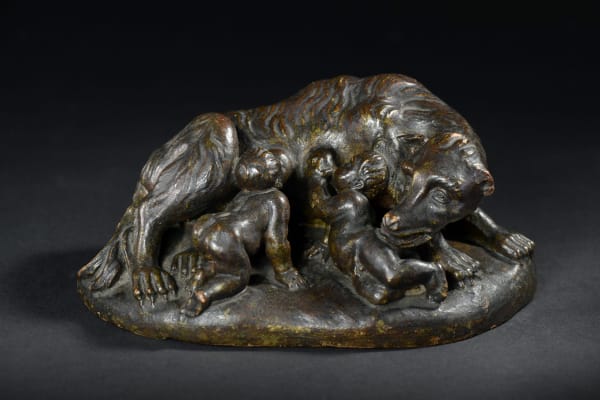Walter Pompe (Lith 1703 - 1777 Antwerp) (attributed)
Walter Pompe was born in Lith – a small village near ‘s-Hertogenbosch – in 1703. He showed talent for sculpting at a very early age; at age 19 he went to study with Michiel van der Voort the Elder in Antwerp. In 1729 he became a member of the local guild of St Luke, as ‘meester in het belthouden’ (master sculptor). He quickly established himself as a successful sculptor with a large workshop. In 1736 Pompe married Christina Baumans, with whom he had no fewer than 11 children. He taught many pupils, including two of his sons, Paulus Martinus and Jan Baptist. Stylistically, Pompe worked in the late baroque style, although many of his works show the influence of the rococo as well.
Pompe mostly worked for churches and cloisters, including Antwerp’s Cathedral of Our Lady and St Andrew’s church. However, besides his monumental religious works, his production also included portrait busts and many smaller works in wood, ivory and terracotta, including several bozzetti and modelli. Some of these were intended as preparatory studies for larger works, but many others were surely intended as works of art in their own right.
Given its size and flat, unworked back, the present work was most likely also a modello, probably for a large wood carving of a saint or apostle commissioned for a church. The face shares many characteristics with that of Pompe's Bozetto for a Saint Joachim, kept in the Royal Museum of Fine Arts, Antwerp (inv. no. 40A).
Provenance
With Constant Vecht, Amsterdam;
Private collection, Antwerp.
- X
- Tumblr
-
 Walter Pompe (Lith 1703 - 1777 Antwerp)The Lupa Capitolina with Romulus and Remusterracotta, bronze patinationheight 8 cm
Walter Pompe (Lith 1703 - 1777 Antwerp)The Lupa Capitolina with Romulus and Remusterracotta, bronze patinationheight 8 cm -
 Walter Pompe (LITH 1703 - 1777 ANTWERP)A Preparatory Drawing for a Virgin and Childpen and brown ink, brush and washes on laid paper200 x 174 mmsigned and dated on the base 'W. Pompe fe 5 10', inscribed in the left margin 'Mot koste 55 gulde wisselgelt / 3 voeten hogh'
Walter Pompe (LITH 1703 - 1777 ANTWERP)A Preparatory Drawing for a Virgin and Childpen and brown ink, brush and washes on laid paper200 x 174 mmsigned and dated on the base 'W. Pompe fe 5 10', inscribed in the left margin 'Mot koste 55 gulde wisselgelt / 3 voeten hogh'


